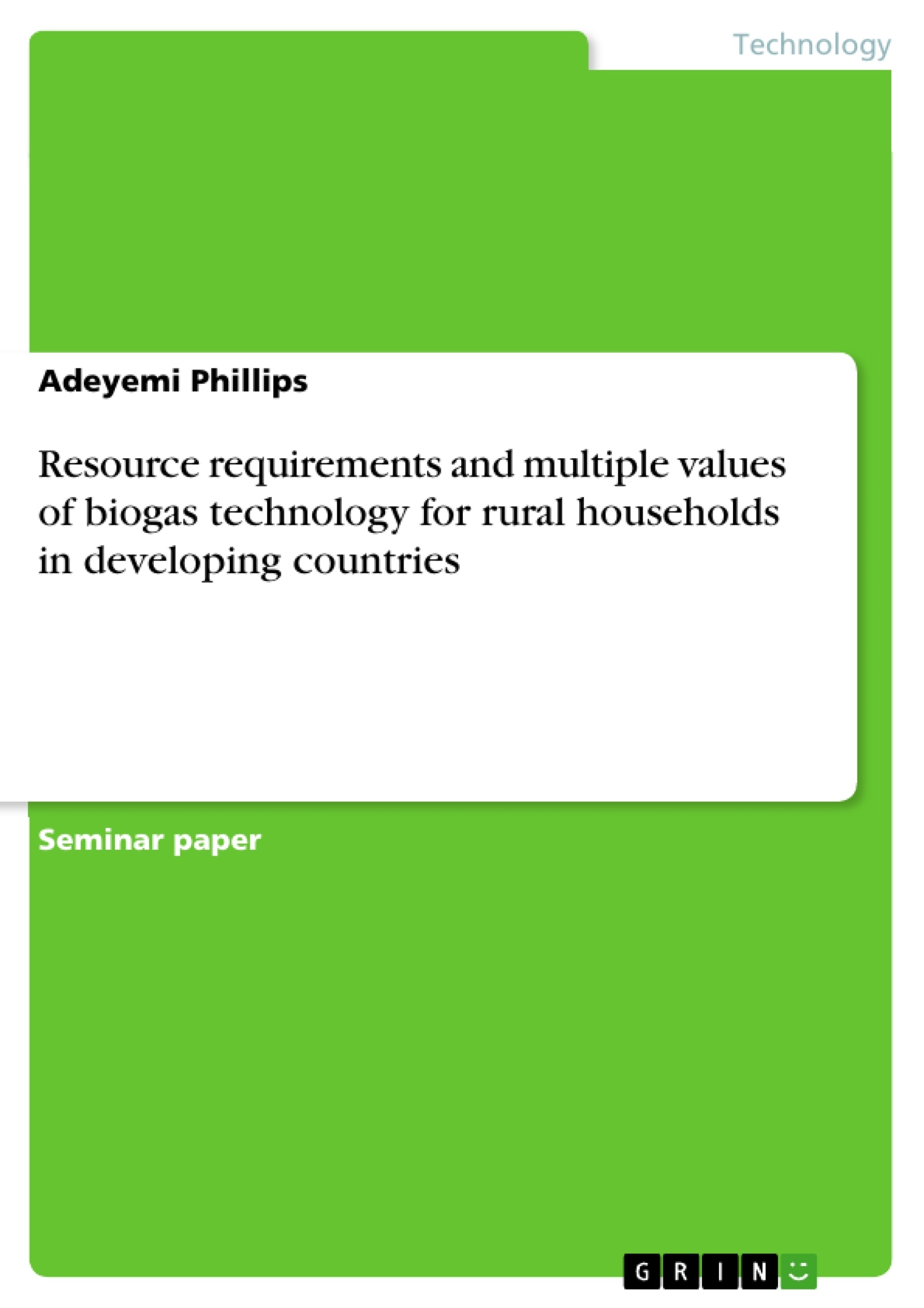This report is based on a literature review to analyze various aspects of biogas technology and address resource requirements and multiple values of biogas technology for rural household in developing countries. Biogas technology has been developed and widely used to produce a renewable, high-quality fuel, biogas. However, the development of biogas technology significantly differs over the world, particularly between developing countries and developed countries. In rural areas of developing countries, biogas is normally used for cooking, lighting, heating, etc, and feedstock for biogas production derives from agricultural resources, such as manure and harvest remains. In addition, biogas technology also contributes to GHGs emission reduction and produces a valuable and improved fertilizer.
Inhaltsverzeichnis (Table of Contents)
- CHAPTER ONE
- 1.0 INTRODUCTION
- 1.1 BIOGAS
- 1.2 AIM AND OBJECTIVES
- CHAPTER TWO
- 2.0 LITERATURE REVIEW
- 2.1 Biogas Technology Status in Africa
Zielsetzung und Themenschwerpunkte (Objectives and Key Themes)
This seminar report aims to provide a comprehensive review of biogas technology, encompassing its production, feedstock, different types of digesters, benefits, energy value, environmental impact, and economic performance. The report explores the potential of biogas as a sustainable energy source, particularly in the context of Africa's energy needs.
- The growing demand for energy and the environmental challenges posed by fossil fuels.
- The potential of biogas as a renewable energy source, especially in Africa.
- The technical aspects of biogas production and utilization.
- The economic and environmental benefits of biogas technology.
- The importance of sustainable energy solutions in developing countries.
Zusammenfassung der Kapitel (Chapter Summaries)
- Chapter One: This chapter introduces the concept of biogas as a renewable energy source, highlighting its importance in addressing the challenges of fossil fuel dependence and greenhouse gas emissions. It discusses the potential of biogas technology in various energy sectors and outlines the objectives of the seminar report.
- Chapter Two: This chapter delves into the current status of biogas technology in Africa, examining the continent's energy needs and the potential of biogas as a sustainable solution. It highlights the advantages of biogas production, including its energy efficiency, environmental benefits, and economic viability.
Schlüsselwörter (Keywords)
Biogas technology, renewable energy, sustainable development, Africa, energy crisis, greenhouse gas emissions, anaerobic digestion, feedstock, digesters, energy value, environmental benefits, economic performance.
- Citation du texte
- Adeyemi Phillips (Auteur), 2017, Resource requirements and multiple values of biogas technology for rural households in developing countries, Munich, GRIN Verlag, https://www.grin.com/document/444170



